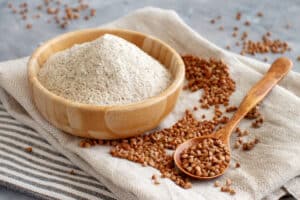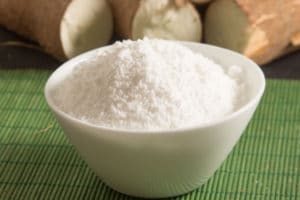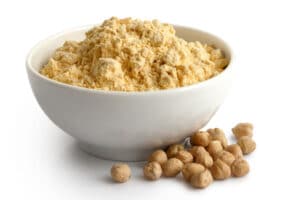The best option for a rice flour substitute is cornstarch because it is also gluten-free, has no distinct flavor, and you can use it for baking, frying, and thickening sauces and gravy.
There are additional substitutions that one can use to achieve the same results. Still, you will have to adjust the ratios and acknowledge which rice flour alternative serves best for various forms of cooking.
For example, the best substitute to go with for thickening a sauce would be cornstarch or potato starch; for frying, choose potato starch, and for baking, all-purpose flour, sorghum flour, or tapioca flour. Since there are multiple types of rice flour, these are the best replacements that are easily accessible and won’t affect the end result.
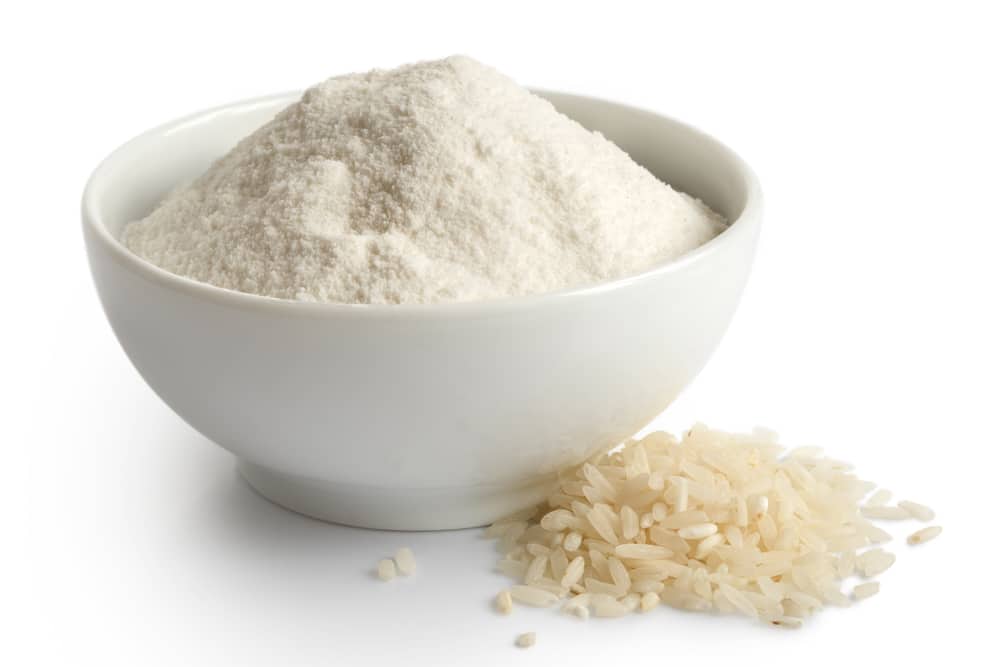
5 Recommended Rice Flour Substitutes
Here are out top substitutes for rice flour, based on flavor, texture, and achieving the desired results:
- Cornstarch
- All-Purpose flour
- Almond flour
- Potato starch
- Tapioca flour
Cornstarch: Best Rice Flour Substitute
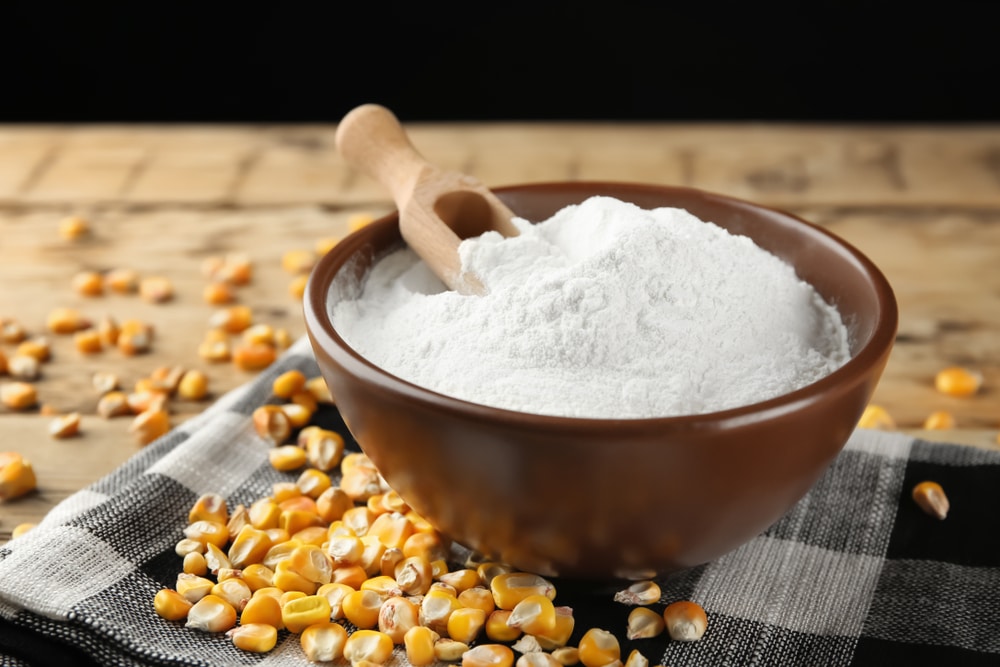
Cornstarch is the best rice flour substitute if you’re trying to thicken gravy or sauce. Additionally, it stands in as a gluten-free substitute as well. Cornstarch is also flavorless, allowing you to freely thicken your gravy and sauces without adding any additional flavors.
If you’re looking to fry up some things, cornstarch is an awesome alternative to rice flour in this application as well. Feel free to dredge your chicken, potatoes, and pork chops in cornstarch; you’re in store for a crunchy texture once it’s finished frying.
Thickening sauce with cornstarch is very doable, but there are a few things that one should keep in mind. Remember that it is possible to place flour directly inside of a liquid with rice flour alone, instantly thickening it.
On the other hand, with cornstarch, there’s a need to put a bit of water in first and then filter the slurry you’ve made into your gravy or sauce. Allow it to simmer on low heat and let it thicken to your liking.
Cornstarch is a 1:1 ratio substitute for rice flour. However, before mixing it into your sauce or gravy, be sure to transform the cornstarch into a slurry.
All-Purpose Flour
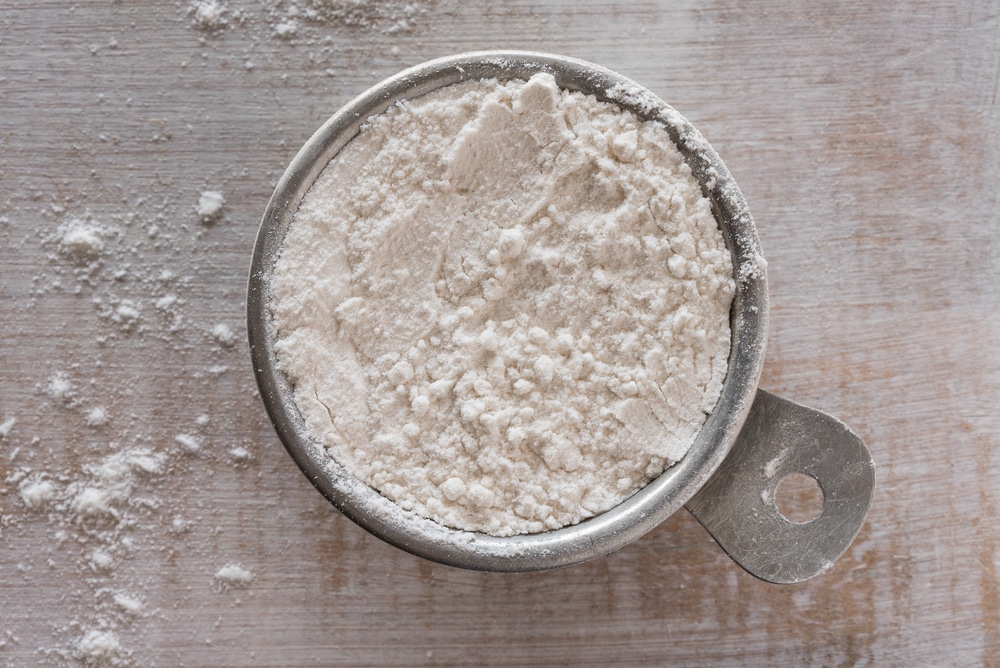
All-purpose flour is a terrific alternative for thickening sauces or gravies. What’s more, it is likely to be stocked in your home at all times of the year. All-purpose flour differs from cornstarch in that it typically is not gluten-free.
To use all-purpose flour as a thickening agent, it has to be put into liquid form before adding it to a sauce or a gravy. Add water to the flour to transform it into a slurry-like consistency and filter it into the sauce. Allow the sauce to simmer to the sauce or gravy thicken gradually.
All-purpose flour is so versatile that you can use it as a viable substitute to rice flour in just about every application. Think about how many baked goods use all-purpose flour when you’re in the kitchen baking. You can also substitute baker’s rice flour in its place with ease. This speaks to how interchangeable these ingredients are, and you can swap them in a 1:1 ratio.
Almond Flour
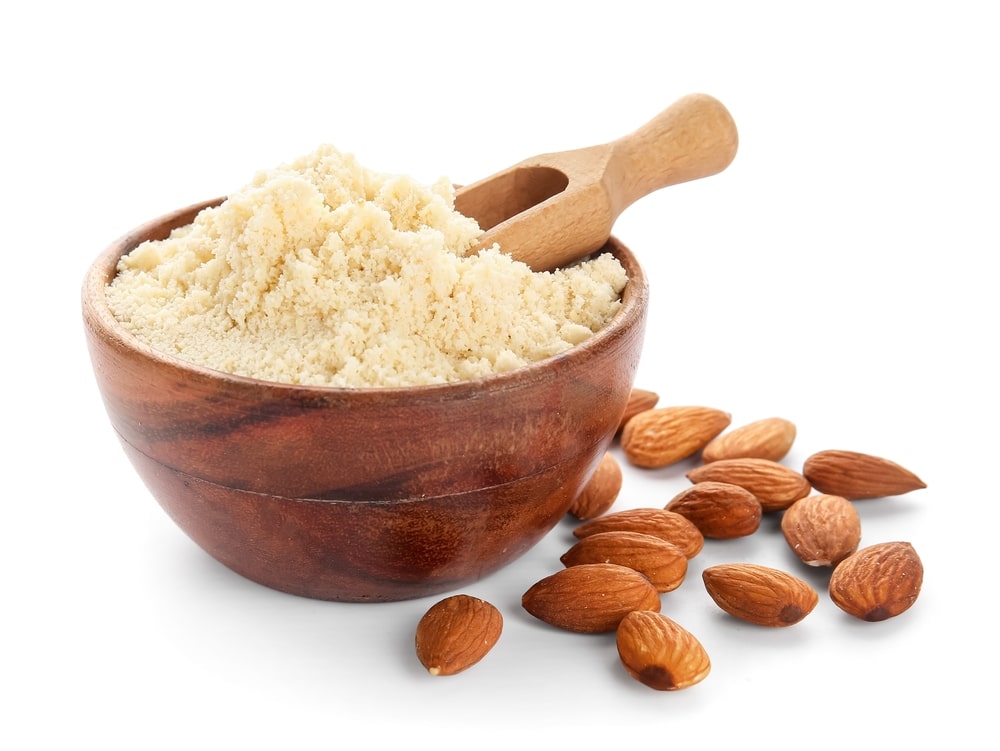
Almond flour may be something you’ve never heard of, and it’s also gluten-free and happens to be as equally as nutritious as flour. According to Healthline, an ounce of almond flour will make up many of your essential nutrients, especially vitamin E.
Almond flour is a fantastic rice flour alternative, especially when baking. Although the flour has a nutty flavor, you can easily mask it with a bit of vanilla or chocolate.
Almond flour can be used for coating and frying foods as well. There’s one caveat; since almond flour does quickly burn, you have to keep a watchful eye on your food. As a safer option, you could cook your food and then place it into the oven for a crispy texture while avoiding the risk of ruining it altogether.
Additionally, a ratio of rice flour to almond flour is an excellent rule of thumb to go.
Potato Starch
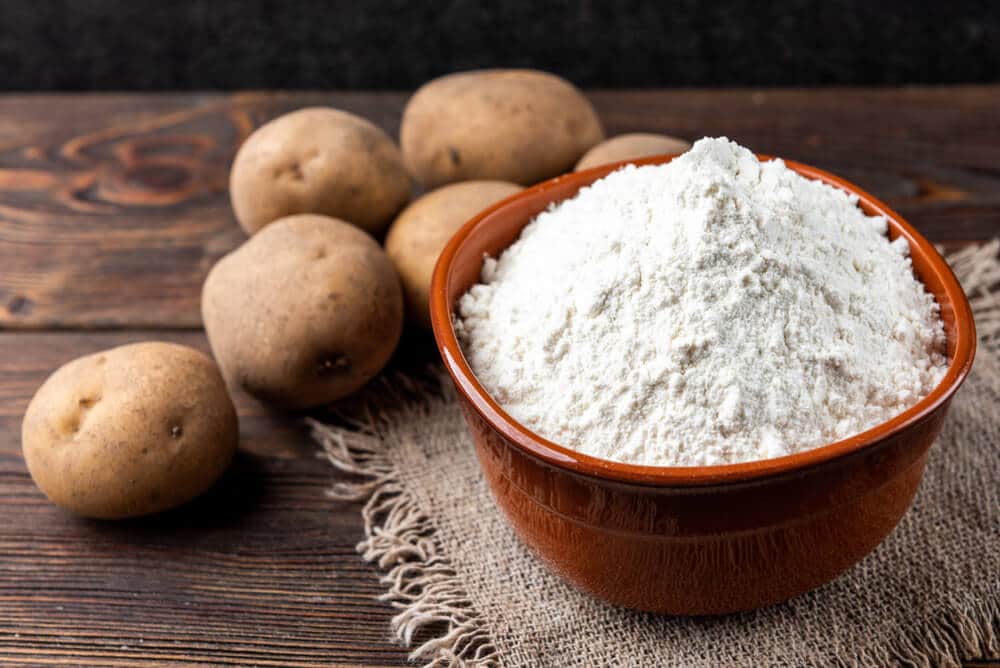
Potato starch and rice flour can be used similarly and often substituted interchangeably. This shouldn’t be confused with potato flour. Potato starch is made by extracting the starch from the potato. Next, the starch is dried and ground into a powder closely resembling cornstarch.
Potato starch is an excellent rice flour substitute when it comes to frying. More accurately, potato starch can be even better.
If potato starch is being used to thicken sauces, gravy, or liquids, you must be mindful that cornstarch is a much stronger thickening agent than rice flour. So you will undoubtedly need less potato starch than any other thickening agent to thicken a sauce.
You can make your potato starch slurry by putting one tablespoon of potato starch and two tablespoons of water together as a perfect swap to thicken a cup’s worth of liquid.
Learn more about potato flour: Difference between potato starch and potato flour
Tapioca Flour
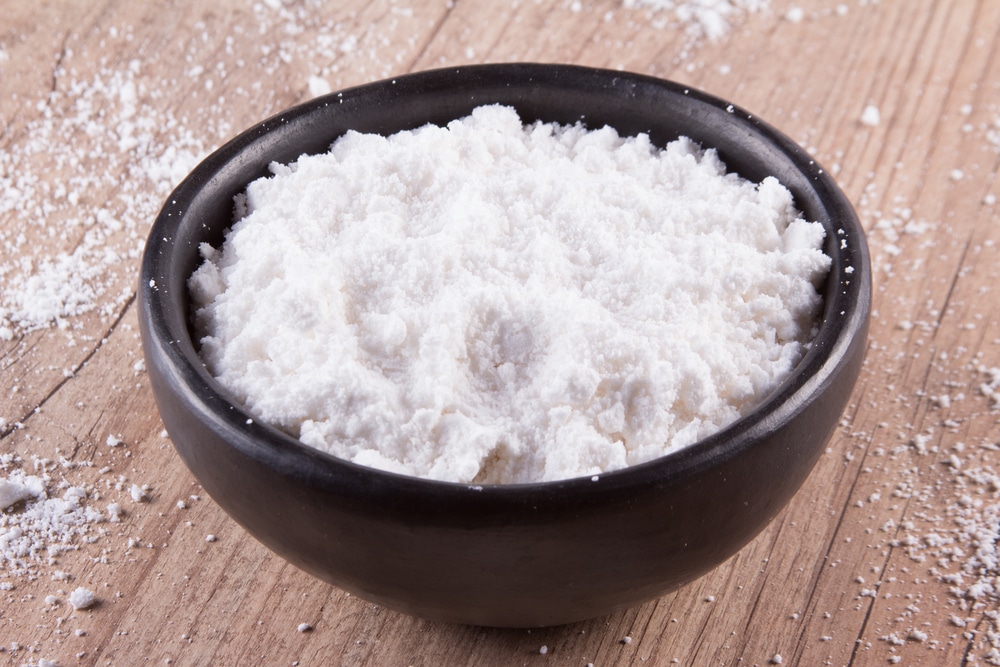
Tapioca is a suitable rice flour substitute mainly because it also doesn’t contain gluten, and it has a similar texture and subtle flavor. This flour comes from the cassava plant root, and it is likely the least expensive substitute for rice flour available.
It won’t interfere with the flavor or smell of anything that you add it to, but it’s not great for frying, as it can’t withstand high heat levels. You can use it for pan-frying, but it is not recommended for deep frying. Tapioca is, however, a fantastic substitute for white rice flour when it comes to thickening sauces or making an extra creamy gravy.
Since it thickens rather quickly, take caution to mix it in gradually when mixing with liquid. Tapioca flour is also a good candidate for baking. It makes a crunchy crust and a chewy dough. It does have a slightly sweeter flavor than rice flour, so you probably don’t need to add as much sugar as you would if you were using rice flour.
To use tapioca flour as a substitute, go with a 2 to 1 ratio, meaning you’ll use two cups of tapioca flour for every one cup of rice flour that you’d use.
Related Questions
Here are the responses to the most commonly asked questions regarding rice flour:
What can I use instead of rice flour for sourdough bread?
It’s best to use rice flour in the banneton (basket) because it keeps the dough from sticking. Since the rice flour doesn’t contain gluten, it doesn’t attach to any gluten in the dough.
Try semolina or cornmeal instead if you don’t have rice flour on hand. Be mindful that cornmeal has a grittier texture than rice flour, which is finer and lighter in consistency.
What is the difference between rice flour and all-purpose flour?
The primary difference between rice flour and all-purpose flour is that all-purpose flour has gluten and rice flour does not. Additionally, rice flour has a more granular texture than all-purpose flour, and it is lighter. Brown rice flour also has much more fiber than all-purpose flour.
Rice flour doesn’t absorb liquids well as all-purpose flour does. For this reason, when baking, you have to mix rice flour with another flour that contains gluten for optimal results.
You cannot use rice flour in the same ratios as you would if you used it as a substitute for all-purpose flour. Instead, it’s better to use ⅞ cup of rice flour for every cup of all-purpose flour. Otherwise, the results will be gritty, greasy, and even a little gummy.
What is the difference between bread flour and rice flour?
The main difference between rice flour and bread flour is that Rice flour has many more calories than bread flour. These two flours are also used differently when you bake. Rice flour should get mixed with another flour that contains gluten when you bake because it doesn’t absorb fats and liquids and won’t produce the desired texture.
Bread flour is denser than white rice flour and has a higher protein content. This makes bread doughs elastic and produces an airy texture when baked that you don’t get with rice flour. Bread flour also has a more robust flavor than rice flavor.
Can I substitute rice flour for self-raising flour?
It can also be tricky baking with rice flour, as you may need to add more liquid due to the high absorption of moisture. Rice flour ingredients for a self-rising flour substitute consist of one cup of rice flour and 1½ teaspoons of baking powder.
Is rice flour the same as cornflour?
Rice flour and cornflour are not the same. Rice flour comes from grounding white or brown rice into a fine powdery texture. It also has a slightly grainy texture.
On the other hand, corn flour comes from whole corn kernels that have been dried. It is a whole grain flour that contains the corn’s endosperm, germ, and hull. The texture is smooth and fine, like whole wheat flour.
You can use rice flour and cornflour interchangeably, but it’s actually better to substitute the rice flour for cornmeal instead. They both do not contain gluten, so they should be mixed with other flours for baking.
More flour substitutes:



